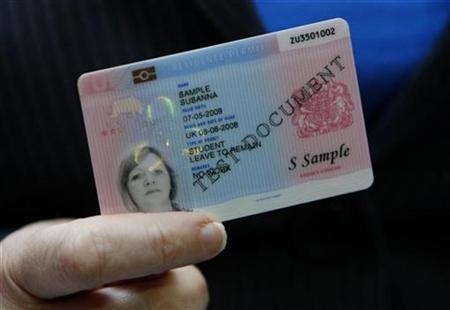Biometric ID cards use people’s unique biological or behavioral characteristics to verify their identities. They can use such features as fingerprints and iris recognition, which the cardholders cannot forget and other people cannot copy. The cards can be used in a wide variety of real-world applications, particularly in places where strong security is crucial. The biometric ID cards are also suitable for highly competitive areas to prevent against theft and illegal duplication. They may range from government sectors to research institutions.
Immigration:
The Government of Singapore has implemented a self-clearance system that uses fingerprint-based biometric technology at different entry checkpoint locations. Known as the Immigration Automated Clearance System, the smart card-based method protects against the entry of unwanted people or cargo through air, sea and land. It provides the citizens with express immigration clearance that is more efficient and secure.
The Netherlands has also automated its border crossing system. The biometric ID cards used incorporate smart card chips, photos and iris recognition.
Frequent travelers can apply for their personalized cards that contain their fingerprint data. The cards are inserted into readers at kiosks in the entry checkpoint locations to match the holders’ fingerprints with those stored on the cards. Any person whose details do not match is taken for secondary screening.
Keyless Access:
The University of Arizona has implemented a Keyless Access & Security System throughout the campus to manage its facilities and resources better. Staff, faculty members, students and affiliates use biometric contactless smart cards to access different university facilities.
Launched in 2006, the “CatCard” has replaced different independent access control systems the university used previously. It uses a standardized technology that relies on comprehensive standards and policies. A computerized control center records, processes and notifies relevant agencies.
The CatCard, which is the official ID card at the university, incorporates digitized photos and signatures embedded onto magnetic stripes and contactless smart chips. The system includes digital video security cameras that allow the university’s police department to observe different locations in real-time from their dispatch center. The department uses standardized incident response protocols that allow the police to respond to particular locations instead of general building locations.
Social Security:
The government of Spain uses biometric ID cards in its social security system to store and retrieve information using smart card technology.
National IDs:
Different countries are considering using biometric information in their national IDs. They store their citizens’ details on large databases that different government sectors can access. These countries include the United States, France and Britain.
Malaysia has already implemented the system. The national IDs include fingerprint recognition, photos and smart card chips.
Others:
Other places where biometric ID cards have been used include airport restricted areas, Transportation Worker Identification Credential in the U.S. and electronic passports.
Wherever the biometric ID cards are implemented, they can be used for either identification or verification. They can help determine whether people’s records exist within given enrolled populations or whether their live biometric templates match any enrolled template record. The enrollment process used to capture and verify biometric data minimizes counterfeiting attempts.



